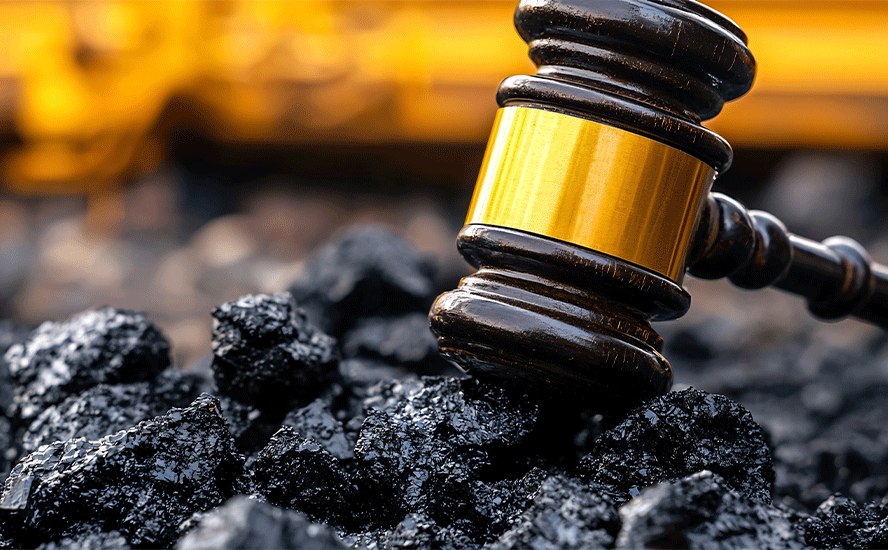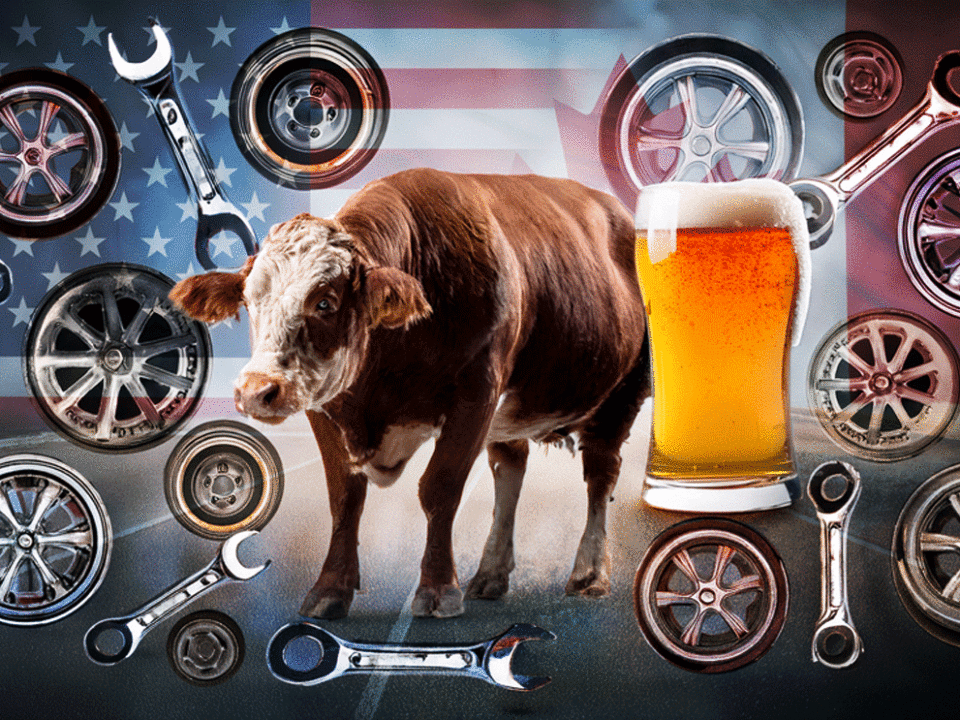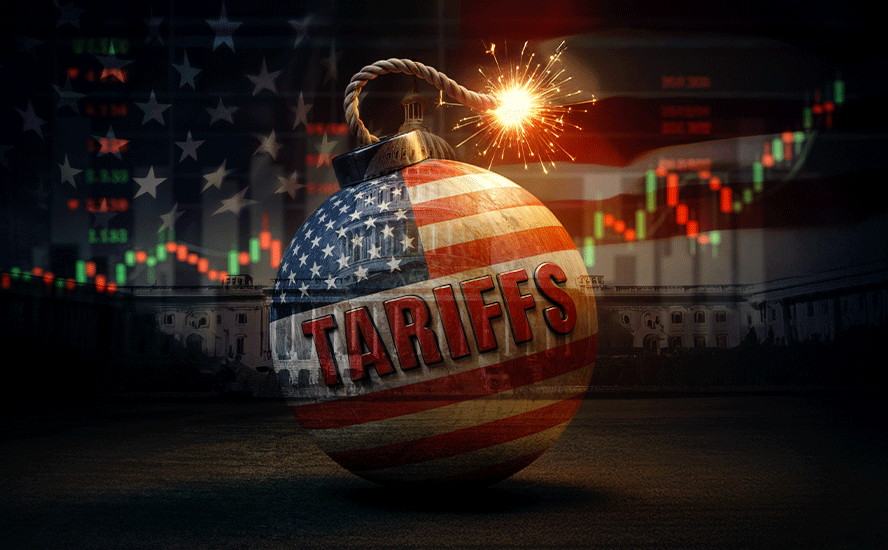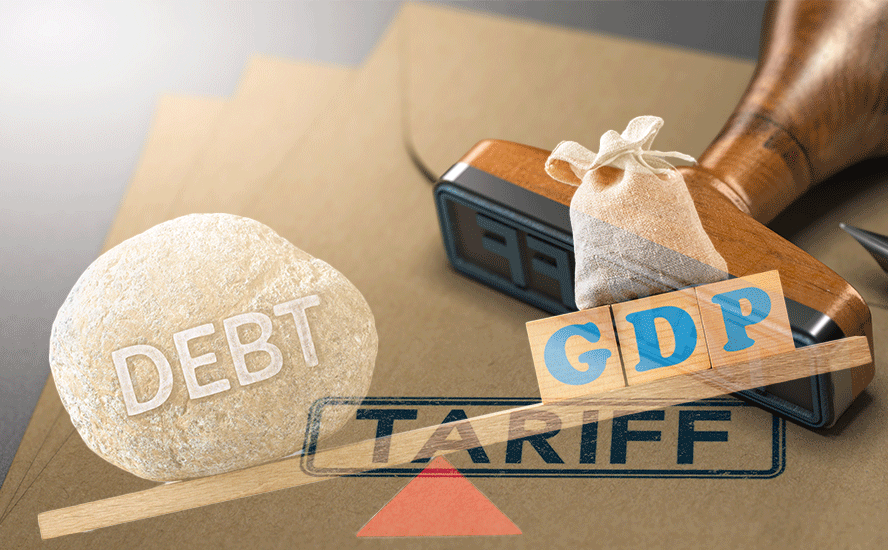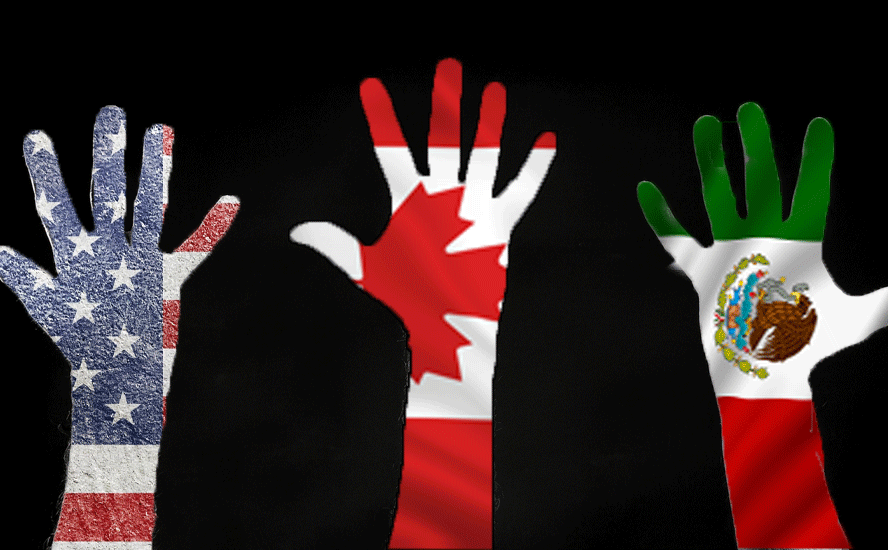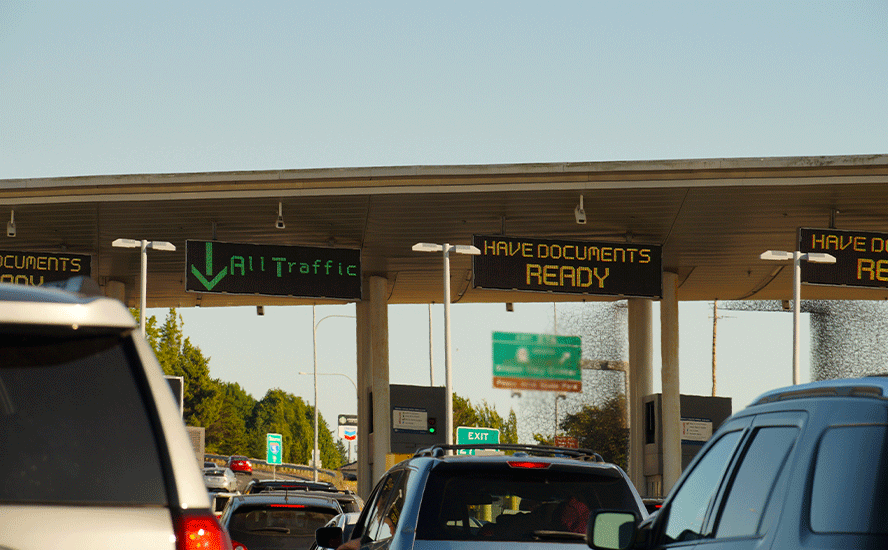The increasing awareness of resource scarcity – Richard Mills
2022.11.16
Canada and the United States are finally getting serious about protecting their metallic and agricultural resources during a period of increased geopolitical instability.
There is also the need for more certainty, as to whether developed economies will have the raw materials required for the “green shift”, a global transition from fossil-fueled transportation and energy generation to electric vehicles and renewable power.
We already know, for example, that we don’t have enough copper for even a 30% penetration of EVs. Much of the anxiety boils down to security of supply.
Security of supply
Access to raw materials at competitive prices has become essential to the functioning of all industrialized economies. As we move forward, developing and developed countries will, with their massive population booms and necessary upgrades of worn-out infrastructure, continue to place extraordinary demands on their ability to access and distribute the planet’s natural resources.
Threats to the access and distribution of these commodities include:
- Political instability of supplier countries
- The manipulation of supplies
- The competition over supplies
- Attacks on supply infrastructure
- Accidents and natural disasters
- Climate change
Accessing a sustainable, secure, supply of raw materials should be a number one priority for all countries. Increasingly we are seeing countries ensuring their own industries have first rights of access to internally produced commodities, and looking for such privileged access from other countries.
Numerous countries are taking steps to safeguard their own supply by:
- Stopping or slowing the export of natural resources
- Shutting down traditional supply markets
- Buying companies for their deposits
- Project finance tied to off-take agreements
For years the United States and Canada didn’t bother much with security of supply, especially when it came to exploring for minerals and building new mines. Globalization brought with it the mentality that all countries are free traders, and friends. Dirty mining and processing? NIMBY. Let China do it, or the DRC, or whomever.
The West’s loss is China’s gain
In many metal markets, the West’s reluctance to mine has been China’s gain.
China’s near-complete dominance of ‘green economy’ metals
During the 2000s, metals were much more readily available than they are currently, and China was there, ready to sign offtake agreements and lock up valuable supplies.
We know from previous articles that China has been extremely active in acquiring ownership or part-ownership of foreign lithium mines and inking offtake agreements.
Four out of the five major copper projects in the pipeline right now either have offtakes in place with non-Western countries (South Korea and China), or the mines are partially owned by Japanese companies that have a say in where some of the mined copper is destined. (i.e. Japan)
The West is so behind the curve, in bringing new metal to market, that it could take decades to catch up to Asia. Truth is, by ignoring domestic mining, we’ve been outplayed.
We weren’t paying attention when China cornered the rare earths market back in 2010, and were also blind to the Chinese locking up global supplies & processing capabilities for nickel, cobalt, graphite and lithium.
China has already locked up most of the world’s metals, either through the purchase of mines by sovereign wealth funds, taking stakes in existing mines, or signing offtake agreements.
China has not only run circles around US mining, effectively drawing end-users into a precarious web of import dependence, Beijing has outspent the United States by a long shot and leads the world on infrastructure investments.
But resource shortage awareness is increasing; Western governments are finally taking action to increase their security of supply, and restricting foreign buyers from owning local resources.
Two of the most important targets for protection are agricultural land and critical minerals. We discuss each of these in turn.
Foreign-owned farmland
Residents of the drought-plagued US southwest are growing increasingly alarmed at the amount of groundwater that foreign-owned farms are drawing from underground aquifers at risk of depletion.
A prolonged drought since 2000 in the Colorado River Basin (a study shows 2000-18 was the driest period in the US Southwest since the late 1500s) — which includes bits of seven western states and a part of Mexico — has made it impossible for the country’s biggest reservoirs, Lake Mead in Nevada and Lake Powell straddling the border of Utah and Arizona — to recharge fully.
This is a huge problem, considering that the Colorado River provides water for more than 40 million people including major US cities Las Vegas and Los Angeles.
According to CNN, these offshore companies are taking advantage of lax groundwater laws, allowing them to pump unlimited water underneath property they either own or lease.
For example, United Arab Emirates-based Al Dahra has been tapping into an underground reservoir beneath Wenden, Arizona, that stores water built up for thousands of years. The UAE now imports 80% of its food production, according to the Daily Mail.
This while the state is trying to conserve water; for the second year in a row, Arizona, Nevada, and Mexico had to cut the amount they could draw from the Colorado River. Arizona gets about 36% of its water from the Colorado, as of 2020, and the share of river water feeding farms has declined since then; a Drought Contingency Plan will cut the Arizona’s river water use by 21% starting in 2023, the Daily Mail said.
Another example is the Almarai Company, which owns around 10,000 acres of Arizona farmland under a subsidiary, Fondomonte. As one of the largest Middle Eastern dairy supply companies, Almarai (current market cap USD$15 billion) also owns around 3,500 acres in Southern California, which uses water from the Colorado River to irrigate crops.
The expansion of Middle Eastern firms accelerated following a 2018 ban in Saudi Arabia, on growing water-thirsty crops like alfalfa and hay to feed livestock.
Saudi Arabia, relying heavily on subsidies, developed extensive agriculture based on its deep fossil aquifer, and they sucked it dry. In 2015, the country announced that the 2016 wheat harvest would be its last. But, the Saudis are proud of their vast dairy operations.
“They have all their cows there and they need feeding. That feedstock comes from abroad,” Eckart Woertz, director of the Germany-based GIGA Institute for Middle East Studies, told CNN.
According to the US Department of Agriculture, foreign-owned farmland in the West increased from around 1.25 million acres in 2010 to nearly three million acres in 2020. Midwest farmland owned by sovereign nations has seen a four-fold increase.
Meanwhile, 80% of Arizona has no laws governing how much water can be drained by corporate megafarms, and there is currently no way to track it. Shallow residential wells in La Paz County, AZ, started drying up in 2015, and deeper municipal wells have steadily declined. The county is experiencing its worst drought in 1,200 years.
Declining water tables in the area show levels have dropped from about 100 feet in the 1950s to about 540 feet in 2022.


“We are literally exporting our economy overseas,” Cynthia Campbell, a water resources management adviser for the city of Phoenix, told CNN. “I’m sorry, but there’s no Saudi Arabian milk coming back to Southern California or Arizona. The value of that agricultural output is not coming through in value to the US.”
Chinese companies have also been actively acquiring US farmland. According to the USDA, Chinese ownership leapt more than 20-fold in a decade, from $81 million in 2010 to $1.8 billion in 2020. The department also said foreign investors that year owned nearly 40 million acres of American farmland, which is around 1.7% of all US land — an area about the size of Illinois.
The Wall Street Journal reported in September that:
Alarms went off in Washington when the Fufeng Group, a Chinese agricultural company, bought 300 acres of land and set up a milling plant last spring in Grand Forks, N.D. The plant is a 20-minute drive from an Air Force base that, according to North Dakota Sen. John Hoeven, hosts a space mission that “will form the backbone of U.S. military communications across the globe.”…
In 2013 the government-owned Bank of China loaned $4 billion to Hong Kong-headquartered WH Group, the world’s largest pork producer, to buy Virginia’s Smithfield Foods. WH now controls much of the U.S. pork supply and revenue because of the deal.
Chinese interference in US food supply hasn’t gone un-noticed by lawmakers.
This past summer Senators Tom Cotton (R-Arkansas) and Tommy Tuberville (R-Alabama) introduced the Securing America’s Land from Foreign Interference Act to prohibit members of the Chinese Communist Party from purchasing any land in the United States.
As for Canada, Chinese investment has not been nearly as prevalent in farmland as in the Alberta oil patch (former Prime Minister Harper okayed the $15 billion takeover of Nexen by China’s CNOOC in 2012), however according to The Western Producer,
Foreign companies own a large chunk of Western Canada’s agri-food industry.
A Swiss firm, Glencore, owns Viterra, one of the largest grain handlers on the Prairies.
An American company, Cargill, owns a major beef processing plant in High River, Alta.
Brazil’s JBS owns the beef processing plant in Brooks, Alta.
A Thai company and Japanese firm now control Hylife, one of Canada’s major pork producers and processors.
The role of climate change
Foreign ownership of Canadian and American farms is being made worse by climate change, which is putting pressure on existing water sources and drying out the land to the point where it may no longer be arable.
Good soil is often termed “black gold”, but we are running out of it.
The United Nations has declared soil finite, and predicts catastrophic loss within 60 years. According to the UNCCD, the impact of soil degradation could total $23 trillion in losses of food, ecosystems and income worldwide by 2050.
The world relies on soil for 95% of food production, but the UN (via CNBC) says soil erosion could reduce up to 10% of crop yields by mid-century. This is the equivalent of removing millions of acres of farmland.
As we strip away the amount of available land for food production, we are literally depriving ourselves of the means to survive. Eventually this will lead to the destruction of human civilization — just as desertification contributed to the collapse of the world’s earliest known empire, the Akkadians of Mesopotamia.
A report from the World Resources Institute concludes that feeding the world’s 9.8 billion in 2050 will require clearing most of the world’s remaining forests. The removal of the world’s carbon sinks will result in further warming, increasing the risk of crop failure and mass starvation.
In fact the UN’s Intergovernmental Panel on Climate Change says we need to do precisely the opposite: shrink the amount of emissions-creating farmland and significantly increase the number of trees or other types of vegetation that can act as carbon sinks.
Unfortunately though, we appear no closer to achieving either objective. The planet continues to get hotter and climate change is reducing not only the quantity of food crops but the quality.
Soil erosion could reduce up to 10% of crop yields by mid-century, the equivalent of removing millions of acres of farmland. Remember, “The top 20 cm of soil is all that stands between us and extinction.”
Scientists say it can take up to 1,000 years for nature to produce 2-3 cm of soil, making preservation critical.
The Earth is thought to lose roughly 23 billion tons of fertile soil every year. At this rate, all fertile soil will be gone within 150 years, unless farmers convert to sustainable methods like no-till farming.
But that is unlikely to happen en masse, considering that the food industry is monopolized by fewer than a dozen companies, all of them largely owned by BlackRock and Vanguard. While individual farmers are suffering from higher input costs, like fertilizer, feed and fuel, forcing them to cull herds and plant less, the food companies and some of the richest families in the United States and Europe are raking it in.
Meanwhile, extreme weather much of it attributed to climate change,is wrecking crops and exacerbating the global food crisis that emerged following the shutdown of Europe’s breadbasket, Ukraine.
High food prices triggered by the war, and numerous droughts have driven millions into extreme poverty and malnutrition. According to a World Food Program report, the number of people experiencing acute food insecurity is likely to climb to 222 million in 53 countries and territories.
Reuters reported this week that rainstorms over three days in mid-May washed away up to 3 tonnes of dirt per acre in two dozen Minnesota counties. China’s Yangtze river basin received 40% less rainfall than normal over the summer, as the country was hit by its more severe heat wave and drought in six decades.
In August, a Chinese water ministry official said that one-third of the soil in six key farming provinces along the Yangtze was drier than optimal, and in about 10% of the rural counties in those provinces, soil was suffering “severe water depletion”.
Beijing has resorted to “cloud-seeding” to coax more rainfall; 211 operations were launched in August alone to induce rainfall over 1.45 million square km of parched farmland, according to Reuters.
The situation is even worse in Kenya. There, more than 60% of the country’s land is deemed highly degraded, and more than 27% very highly degraded, according to Kenya’s environment ministry.
Previously fertile soil has turned sandy and since 2000 droughts have become more common. The current one is the worst in four decades. Grass has disappeared from much of Kenya’s vast pastures, along with wildlife that graze on it, such as giraffes, zebras and gazelle.
Arctic resource grab
In the Arctic region of northern Canada, the United States, Scandinavia and Russia, climate change is having a different effect on resources.
As global warming continues to melt glaciers and sea ice (three times faster than the global average), exposing vast expanses of ocean water to sunlight, more and more of the Arctic will become navigable for international shipping and resource exploration.
According to the US Geological Survey, the Arctic Circle (areas beyond the 200-nautical-mile economic exclusion zones are international) contains up to 30% of the world’s undiscovered gas and 13% of its oil.
Among the non-energy minerals hidden within the Arctic’s barren lands are coal, diamonds, uranium, phosphate, nickel and platinum group elements. Rare earth elements and cobalt needed for electric vehicles have also been found in the Arctic regions of Russia and Scandinavia.
Global News notes that Greenland, an autonomous region of Denmark, is claiming the Lomonosov Ridge – an underwater feature extending hundreds of miles beneath the Arctic Sea – for future undersea mining — although Russia disagrees.

Up to now considered to be too difficult and expensive a place to work, in the near future the Arctic is likely to become less daunting, as temperatures rise and ice and snow cover retreat.
With opportunity however comes risk.
The eight countries that touch the Arctic Circle and one that doesn’t (China) may be friendly to each other now but as new resources are identified, expect there to be conflicts and confrontations.
Russia, China and the United States are beefing up their military and civilian presence in the Arctic. Unfortunately, the same can’t be said of Canada.
Alarmed at Russia’s invasion of Ukraine, Finland and Sweden have broken with their long-standing traditions of neutrality and applied to join NATO.
According to Ana Palacio, a writer for Project Syndicate and Spain’s former minister of foreign affairs, this does not bode well for the Arctic Council, an inter-governmental forum that addresses Arctic issues. Members include Canada, Denmark, Finland, Iceland, Norway, Sweden, Russia and the United States.
Once Finland and Sweden’s NATO accession process is complete, Russia will be the forum’s only non-NATO member. Already, the rest of the Council’s members have boycotted any future talks held in Russia, which currently holds its rotating chairmanship.
Then there is Russia itself. Though its military-strategic focus has traditionally been on the Black Sea and the Caucasus, Russia views the High North as an integral part of the larger Eurasian space. There is an important economic component to this logic: the Arctic territories account for a tenth of Russia’s GDP and a fifth of its exports. But it is also strategic: Russia reportedly maintains some 475 military assets in the Arctic, in addition to its Severomorsk-based Northern Fleet.
Critical minerals
Critical minerals are materials that are vital to the economic and national security of a country. To be considered a critical mineral, it must have supply concerns tied to geological scarcity, geopolitical issues, trade policy or other factors.
In 2018, the US Department of the Interior released a list of 35 critical minerals, which was updated this year to contain 15 more commodities. The three most critical inputs in the race to electrify and decarbonize the globe are copper, lithium and graphite.
The Biden administration just made a major funding announcement regarding electric vehicles. The Department of Energy will award $2.8 billion in grants to 20 manufacturing and processing companies for projects across 12 states. The private sector is expected to match the government’s investment, leveraging the $2.8B for a total investment of $9 billion.
The projects are expected to “develop enough lithium to supply over 2 million electric vehicles annually and establish significant domestic production of graphite and nickel,” according to a fact sheet.
The US government (along with the EU and the UK) is also employing local-content rules to encourage domestic sourcing of metals. The Inflation Reduction Act provides tax incentives for companies that manufacture battery materials locally. Significant end-user tax credits of up to $7,500 are available for vehicles with locally sourced battery components. (Mining.com, Oct. 31, 2022)
Additionally, the government has invoked its Cold War powers by including lithium, nickel, cobalt, graphite and manganese on the list of items covered by the 1950 Defense Production Act, previously used by President Harry Truman to make steel for the Korean War.
It’s interesting to note that Canadian mining projects qualify under this program. This week, the CBC reported, The United States military has been quietly soliciting applications for Canadian mining projects that want American public funding through a major national security initiative.
Like for farmland, the critical minerals space is seeing increasing competition from foreign entities, resulting in efforts to protect domestic supplies. We are seeing this particularly in Canada and Germany.
Canadian crackdown
For the past several years, the Canadian government has done little to protect the country’s critical minerals. Ottawa has permitted Chinese companies to take large stakes in critical mineral-mines and allowed them to sign offtake agreements to control metals produced by Canadian firms.
According to Bloomberg, China has built up stakes in more than two dozen Canadian companies At least 27 public companies including Teck Resources, Ivanhoe Mines and First Quantum Minerals have shareholders with ties to China. More critically, pun intended:
Chinese firms have been involved in 89 announced acquisitions and investments in Canadian metals and mining companies in the past decade, according to data compiled by Bloomberg. The value of those transactions is $14 billion. Many deals involve companies tied to the 31 critical minerals identified by Canada.
Recent examples include the acquisition of Canada’s Neo Lithium by Chinese state-controlled Zijin Mining; and the 2019 purchase of the Tanco Mine in Manitoba by Sinomine Resource Corp. Earlier this year, Sinomine began producing lithium at Tanco and shipping it back to China for use in its domestic electric-vehicle industry.
The largest investor in Lithium Americas is a subsidiary of China’s Ganfeng Lithium, while Fission Uranium biggest shareholder is tied to state-owned China General Nuclear Power.
The Canadian government has also used public money to bankroll foreign mining companies. According to Bloomberg, the federal and provincial governments this year have invested around half a billion dollars into critical-minerals mining projects in Canada, with most of the funds going to foreign firms.
Anglo-Australian miner Rio Tinto Group announced earlier this month it stands to receive up to $222-milion from the federal government to modernize a large Quebec metals processing plant that could see it become one of the first North American producers of the critical metal titanium.
South Korean electric-vehicle battery maker LG Energy Solution Ltd. and Dutch automaker Stellantis NV, which announced plans in March to build an EV battery plant in Windsor, Ont., received hundreds of millions from Ottawa and the Ontario government.
General Motors Co. and South Korea’s POSCO Chemical Co. Ltd. also received an undisclosed amount earlier this year for the construction of a $400-million battery parts plant in Bécancour, Que.
(POSCO is also reportedly in talks with Ford, General Motors and Stellantis NV about potentially investing in plants to produce electric-vehicle battery materials. The company already has a relationship with GM, in July signing a $10.8B deal with the US car-making icon.)
However, facing criticism of “going too easy” on China, the Trudeau Liberals recently passed legislation making it harder for foreign state-owned firms to invest in Canadian critical-minerals companies.
My readers know I’m no fan of Trudeau, but I’ll make an exception when it comes to this, arguably the most important piece of industrial legislation to have received his signature in years.
Effective immediately, transactions involving investments by state-owned firms into Canadian critical-minerals companies will only be approved on an “exceptional basis”. The rules apply not only to takeovers but investments of any size.
“It is a significant change,” said Wesley Wark, senior fellow at the Centre for International Governance Innovation, via the Globa & Mail, and an attempt by Ottawa “to fend off further Chinese global control over the critical-minerals supply chain.”
Earlier this year, Canada joined the Minerals Security Partnership,
aimed at securing the supply of critical minerals as global demand for them rises. Members include the United States, Canada, Australia, Finland, France, Germany, Japan, South Korea, Sweden, the United Kingdom and the European Commission. Note who is not in the club: China and Russia.
Why Freeland’s friend-shoring is such a bad idea
Canada’s protectionist stance triggered action earlier this month, when Chinese firms were ordered by governments to divest from three small battery metals explorers, including Calgary-based Lithium Chile.
According to Reuters, Sinomine was asked to sell its investment in Power Metals Corp, Chengze Lithium was asked to divest its investment in Lithium Chile Inc and Zangge Mining required to exit Ultra Lithium Inc…
“The latest attitude from Ottawa underscores the global competition of critical battery minerals in light of projected EV battery demand boom,” Susan Zou, a senior analyst at Rystad Energy, said of Canada’s decision.
As an example of Canada’s tougher talk viz a viz China, Foreign Minister Melanie Joly called China an “increasingly disruptive global power” and warned that Canadians need to be “clear-eyed” about conducting business with the Asian giant. (Bloomberg, Nov. 10, 2022)
Germany, meanwhile, is also mulling what it can do to reduce its dependency on foreign suppliers of minerals it needs to expand its economy and become even more “green”.
The country currently needs to import a whopping 39 out of 46 strategic raw materials, and is growing worried about the reliability of its critical minerals supply chain following Russia’s invasion of Ukraine.
Last week, Bloomberg reported, Germany is considering setting up a state-backed fund to help it secure and diversify supplies of these materials; the aim being to find alternative suppliers to China.
Bloomberg said discussions to reduce dependency on Beijing are also being held at the EU level, with the European Commission planning to present its Critical Raw Materials Acts in the first quarter of 2023.
Conclusion
At AOTH we’ve been beating the drums of electrification and encouraging the domestic (US and Canadian) mining, processing and smelting/refining of critical metals since President Obama first started talking about electrification in 2009.
It’s “only” taken 13 years of AOTH articles and opinion pieces, along with hundreds of other op-eds from like minds, but finally, change is happening at the highest levels of government.
Westerners are finally waking up to the fundamental truth that he who controls the resources, controls the world. When the realization sets in, that we’ve been snookered, the mad rush to secure what’s left will surely ignite a fire under metal and crop prices.
Richard (Rick) Mills
aheadoftheherd.com
subscribe to my free newsletter
Legal Notice / Disclaimer
Ahead of the Herd newsletter, aheadoftheherd.com, hereafter known as AOTH.
Please read the entire Disclaimer carefully before you use this website or read the newsletter. If you do not agree to all the AOTH/Richard Mills Disclaimer, do not access/read this website/newsletter/article, or any of its pages. By reading/using this AOTH/Richard Mills website/newsletter/article, and whether you actually read this Disclaimer, you are deemed to have accepted it.
Any AOTH/Richard Mills document is not, and should not be, construed as an offer to sell or the solicitation of an offer to purchase or subscribe for any investment.
AOTH/Richard Mills has based this document on information obtained from sources he believes to be reliable, but which has not been independently verified.
AOTH/Richard Mills makes no guarantee, representation or warranty and accepts no responsibility or liability as to its accuracy or completeness.
Expressions of opinion are those of AOTH/Richard Mills only and are subject to change without notice.
AOTH/Richard Mills assumes no warranty, liability or guarantee for the current relevance, correctness or completeness of any information provided within this Report and will not be held liable for the consequence of reliance upon any opinion or statement contained herein or any omission.
Furthermore, AOTH/Richard Mills assumes no liability for any direct or indirect loss or damage for lost profit, which you may incur as a result of the use and existence of the information provided within this AOTH/Richard Mills Report.
You agree that by reading AOTH/Richard Mills articles, you are acting at your OWN RISK. In no event should AOTH/Richard Mills liable for any direct or indirect trading losses caused by any information contained in AOTH/Richard Mills articles. Information in AOTH/Richard Mills articles is not an offer to sell or a solicitation of an offer to buy any security. AOTH/Richard Mills is not suggesting the transacting of any financial instruments.
Our publications are not a recommendation to buy or sell a security – no information posted on this site is to be considered investment advice or a recommendation to do anything involving finance or money aside from performing your own due diligence and consulting with your personal registered broker/financial advisor.
AOTH/Richard Mills recommends that before investing in any securities, you consult with a professional financial planner or advisor, and that you should conduct a complete and independent investigation before investing in any security after prudent consideration of all pertinent risks. Ahead of the Herd is not a registered broker, dealer, analyst, or advisor. We hold no investment licenses and may not sell, offer to sell, or offer to buy any security.
Legal Notice / Disclaimer
Ahead of the Herd newsletter, aheadoftheherd.com, hereafter known as AOTH.Please read the entire Disclaimer carefully before you use this website or read the newsletter. If you do not agree to all the AOTH/Richard Mills Disclaimer, do not access/read this website/newsletter/article, or any of its pages. By reading/using this AOTH/Richard Mills website/newsletter/article, and whether you actually read this Disclaimer, you are deemed to have accepted it.


